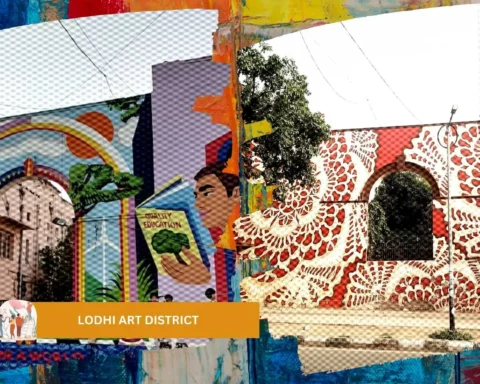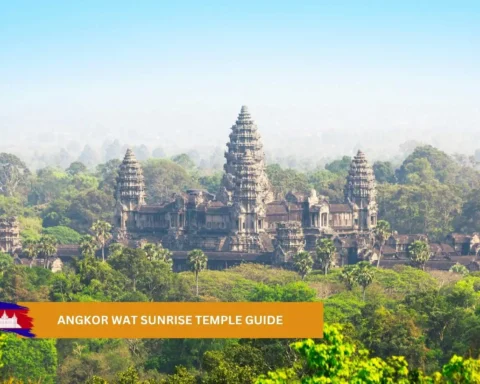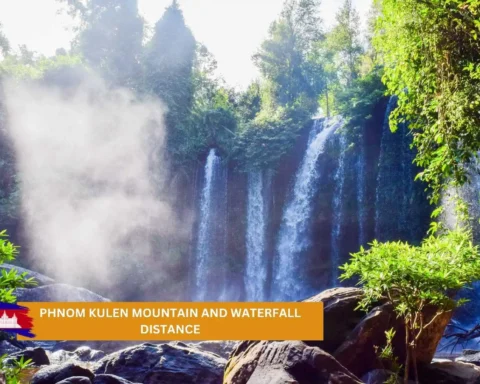Cambodian culture is one of the most enduring and prevalent cultures in Southeast Asia. Iconic temples and spiritual traditions that have existed for millennia, dating back to and before the 10th century, are abundant in not just the rich history but also a part of the daily lives of many Cambodians. This aspect of Cambodia’s vibrant culture is best exemplified by the numerous ancient temples that exist in the country. From Angkor Wat in Siem Reap to the Bayon Temple in Angkor Thom, major temples and ancient cities are an essential part of the Cambodian experience. In this article, we will take a deep dive into planning for the perfect Cambodia Buddhist temples tour and experience.
Table of Contents
The Cambodia Buddhist Temples Tour
The rich heritage of Cambodia can be best experienced through the numerous ancient and significant temples scattered throughout the country. In this section, we will go through many of these sites in an order that can best help you plan your itinerary.
Wat Phnom
First on the Cambodia Buddhist temples tour is the 800-year-old Wat Phnom. It is located in the capital city of Phnom Penh. Although located right in the city center of Phnom Penh, this 14th-century temple serves as a sacred site and a serene sanctuary nestled in the capital city’s hills amidst the bustling urban landscape, offering visitors a peaceful retreat and a glimpse into Cambodia’s rich cultural heritage. The history of the Wat Phnom Temple is steeped in legend, tracing its origins back to the founding of Phnom Penh itself.
According to local legend, in the 14th century, a wealthy widow named Lady Penh discovered four sacred Buddha statues hidden in a nearby river. Inspired by this divine discovery, Lady Penh erected a small shrine atop a hill to enshrine the statues, marking it as a spiritual center.

Wat Ounalom
Also within Phnom Penh is the Wat Ounalom temple complex. This temple complex serves as the headquarters of Buddhism in Cambodia and is an essential part of Cambodian culture. The complex also bore witness to some of the many atrocities carried out by the Khmer Regime in the mid-20th century.
Angkor Wat
Moving away from the capital, Phnom Penh, to the second-largest city in the country, Siem Reap. Siem Reap is host to many of the famed temples in the country, chief amongst them Angkor Wat. The importance of Angkor Wat is perhaps best represented by its depiction at the center of the Cambodian flag. Angkor Wat was built at the behest of the Khmer king Suryavarman II in the early 12th century in Yaśodharapura (present-day Angkor), the capital of the Khmer Empire, as his state temple and eventual mausoleum. Angkor Wat combines two basic plans of Khmer temple architecture, completely the temple-mountain and the later galleried temple.
Angkor Thom
Another temple completely commissioned by King Jayavarman VII is Angkor Thom. Also located in Siem Reap, this temple is about 1.7 km north of Angkor Wat, within which are located several monuments from earlier eras.
Although technically a different ancient city, Angkor Thom is considered to be within the proximity of Siem Reap, surrounded by a square wall 8 meters in height and 12 kilometres in length. The complex has five monumental gates, which are north, west, south, and two in the east wall, respectively. In front of each gate stand giant statues of 54 gods and 54 demons. In the center of the walled area are the city’s most important monuments: the Baphuon, the Royal Enclosure, the Phimeanakas, and the Terrace of Elephants.
Bayon Temple
Located within the Angkor Thom complex is the Bayon Temple. This famous structure also holds smiling faces. Gigantic carvings of many smiling faces are one of the many sites to behold. A total of 216 smiling faces exist within the upper gallery, divided among several towers. It is believed that the faces point in each direction to signify the King’s presence.
Tips and Temple Etiquette for Tourists
When visiting Buddhist temples in Cambodia, it is essential to adhere to local etiquette to show respect for the sacred environment and the cultural traditions. Proper attire is paramount for both men and women. Clothing should cover the shoulders and knees. Sleeveless tops, shorts, and skirts above the knee are considered inappropriate. Additionally, hats and sunglasses should be removed before entering the temple grounds. Footwear must be removed upon entering temple buildings, as shoes are considered impure in Buddhist culture.
Inside the temple, maintaining a respectful demeanor is crucial. Speak softly and avoid loud conversations to preserve the sanctity of the space. It is customary to sit with legs bent and feet tucked to the side, ensuring that the soles are not facing Buddha statues or monks, as this is considered disrespectful. Touching Buddha statues or sacred objects is prohibited; these should be approached with reverence and not touched. Women should not touch monks or their robes; if offering something, place it within the monk’s reach or ask a man to present it on your behalf. Photography is generally allowed, but always obtain permission before taking photos, especially of monks or worshippers. Additionally, avoid using flash during ceremonies.

Conclusion
In conclusion, exploring the rich cultural and spiritual heritage of Cambodia Buddhist temples tour offers travelers a unique and deeply enriching experience. These sacred sites, steeped in history and tradition, provide insight into the country’s enduring spiritual legacy and vibrant cultural tapestry. From the awe-inspiring Angkor Wat to the serene temples of Wat Phnom, visitors are immersed in an atmosphere of peace and reflection. A Cambodia Buddhist temple tour not only enhances understanding of Buddhist practices and beliefs but also fosters a profound appreciation for the architectural and artistic achievements of the Khmer Empire, leaving an indelible impression on all who partake in this journey.









